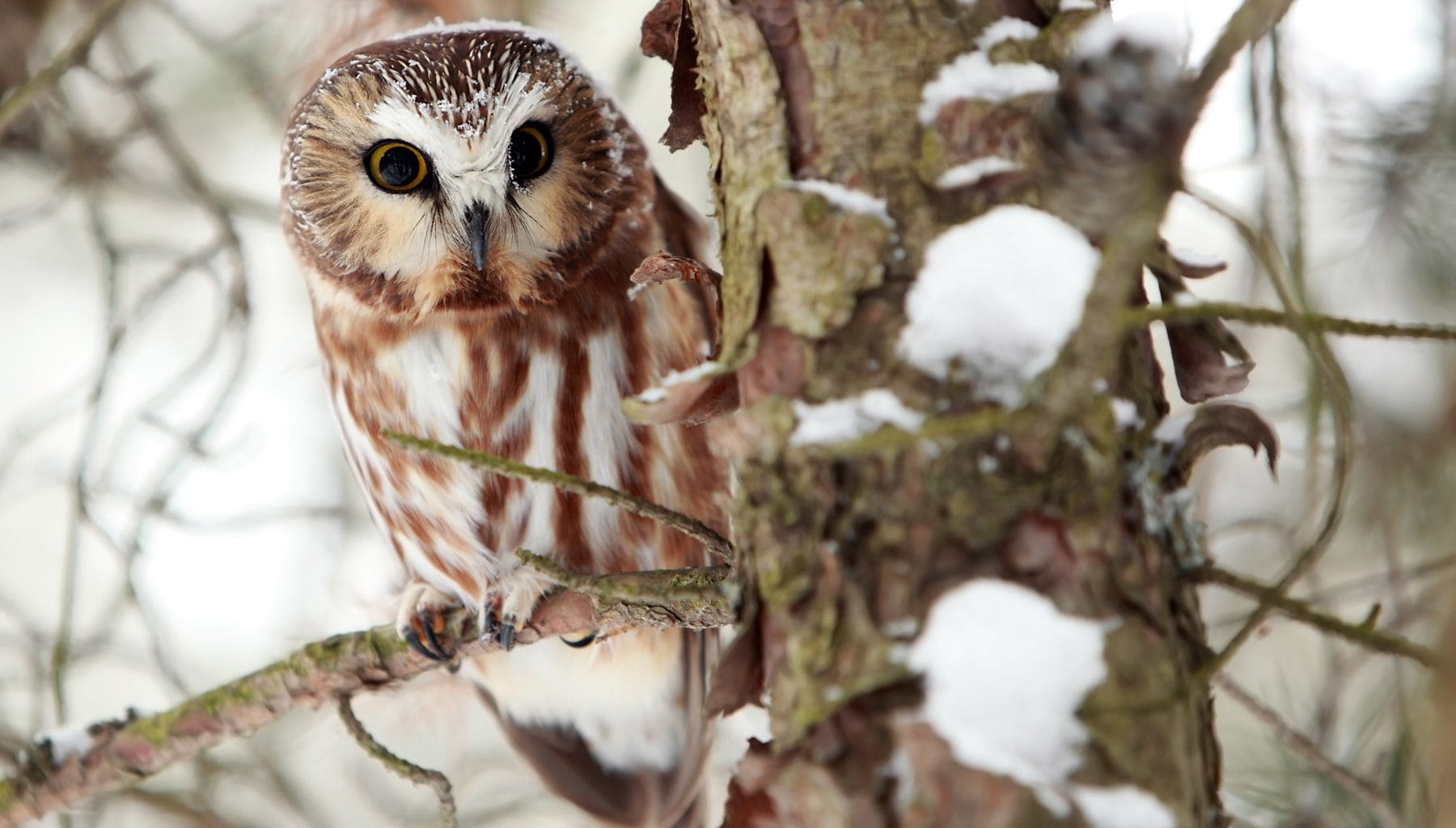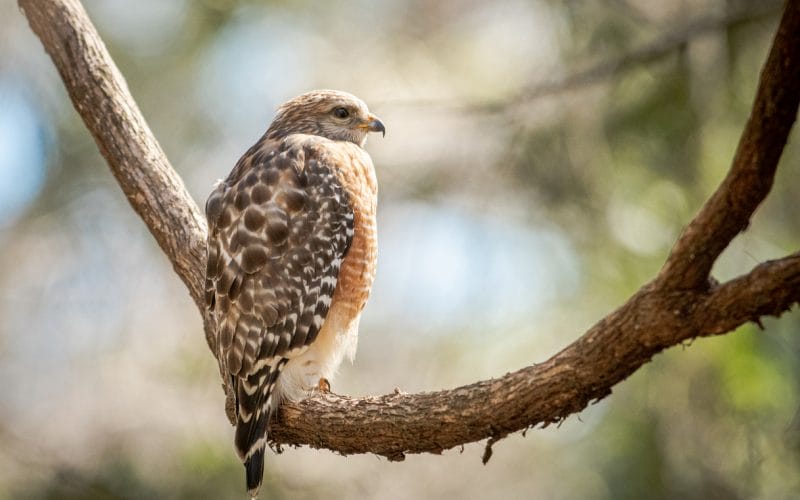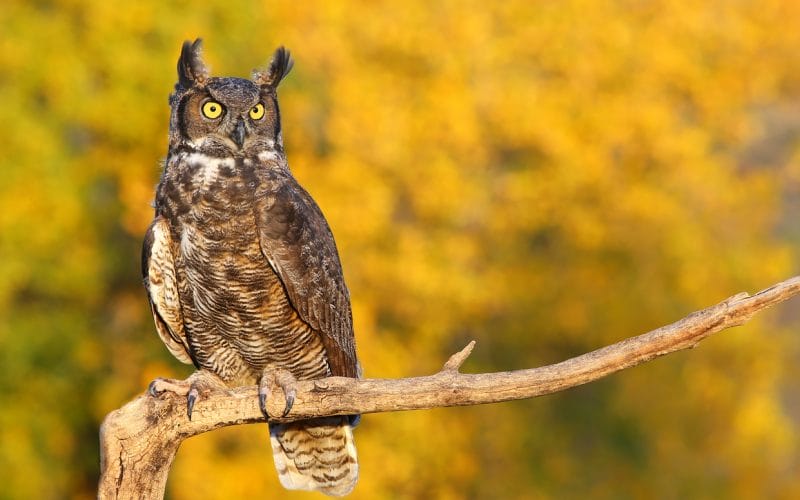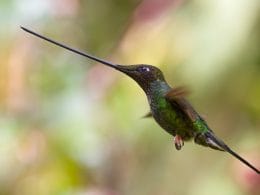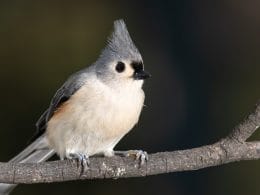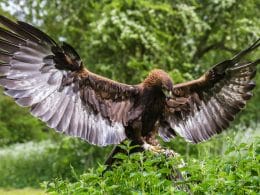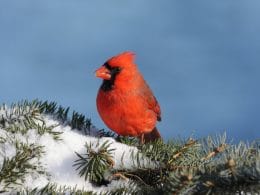According to the official OOS (Ohio ornithological society) bird checklist, the Buckeye State has 443 species of birds as of July 2021.
If you live in Ohio or you’ve going to visit, and you’re curious about the types of owls, hawks, eagles, falcons, and other birds of prey you can commonly see there, then you’ve come to the right place!
In today’s article, we’re sharing interesting facts and simple descriptions of Ohio birds of prey to help you better spot and identify them. Let’s get started!
1. Eastern Screech-Owl
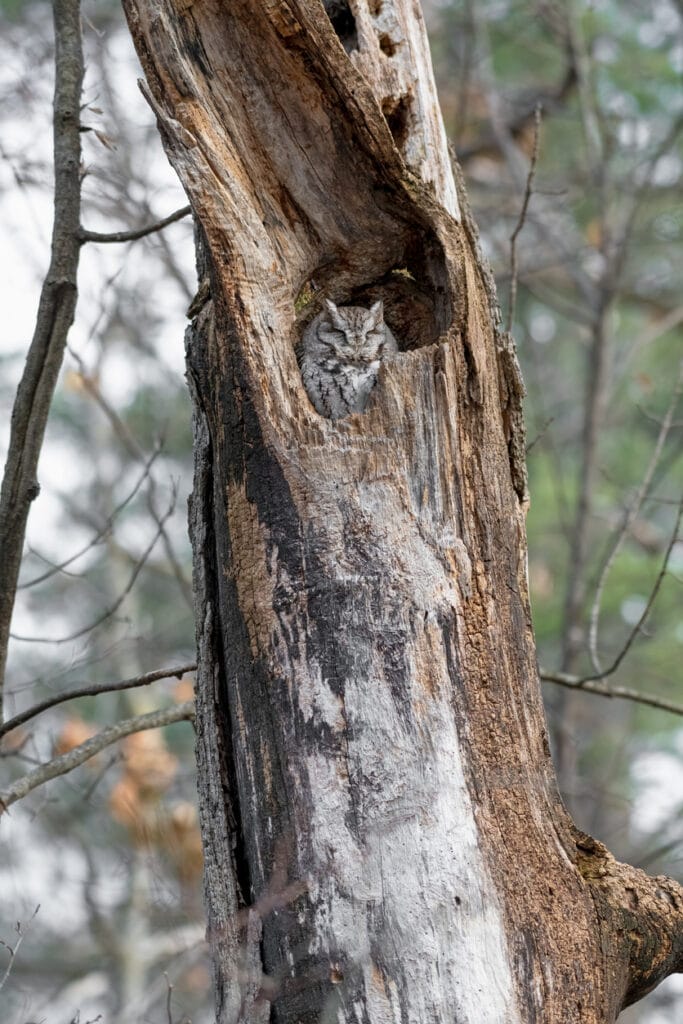
The Eastern Screech-Owl, scientifically known as Megascops asio, is one of the most common owl species in Ohio that you can find any time throughout the year.
It measures between 6.3 and 9.8 inches (16 and 25 cm) long and weighs around 4.3 to 8.6 ounces (121 to 244 g) with a wingspan ranging between 18.9 to 24.0 inches (48 to 61 cm).
Eastern Screech-Owls are short and stocky, colored either grey or reddish-brown. Whatever the color, these birds feature complex patterns of stripes and spots that serve as excellent camouflage against tree bark.
Author Note: Eastern Screech-Owls possess relatively large heads, yellow eyes, pointed ear tufts that are often raised, and what seems like a permanent scowl on their faces. Their tails are squared and their wings are rounded.
As nocturnal creatures, spotting these owls in the light of day is rare. They like to live in second-growth forests, especially at lower elevations, staying in open spaces such as swamps and suburban areas.
Eastern Screech-Owls are more “heard” than “seen” as most birdwatchers recognize them by their distinct calls.
2. Northern Saw-whet Owl
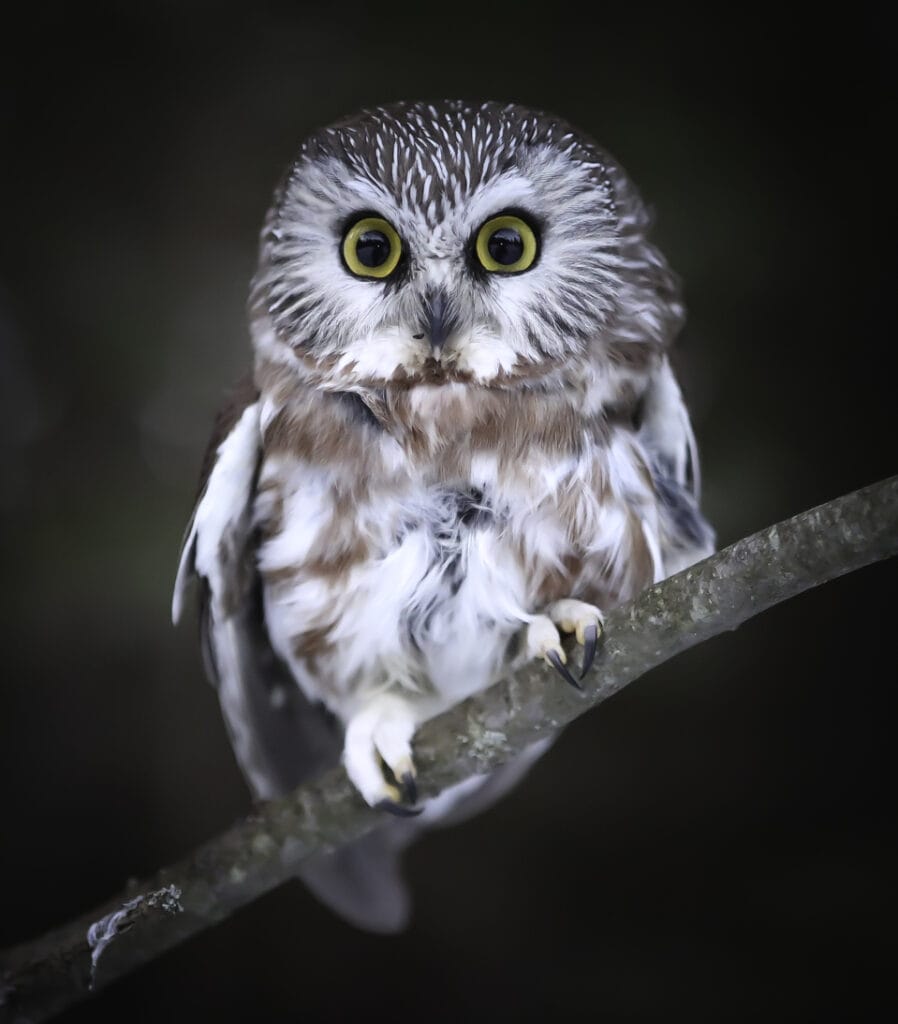
The Northern Saw-whet Owl, scientifically named Aegolius acadicus, measures around 7.1 to 8.3 inches (18 to 21 cm) long and has a wingspan of 16.5 to 18.9 inches (42 to 48 cm). It weighs about 2.3 to 5.3 ounces (65 to 151 g) and is one of the smallest owl species you can find in the state.
Northern Saw-whet Owls possess relatively large rounded heads and no ear tufts. Their bodies are mottled brown with white spotting on the head and face.
These birds of prey have a distinctive white facial disk and bright yellow eyes. Naturally, these owls are highly elusive and nocturnal, so they can be challenging to spot. Luckily, they produce a unique call consisting of multiple sharp, consecutive sounds to help you on your mission.
Northern Saw-whet owls roost in dense vegetation and breed in thick forests, but they sometimes stay in more open spaces. Typically, their diet includes voles, shrews, and deer mice.
3. Barred Owl

The Barred Owl, also referred to as Strix varias, measures between 16.9 and 19.7 inches (43 and 50 cm) long with a wingspan ranging from 39.0 to 43.3 inches (99 to 110 cm). It weighs around 16.6 and 37.0 ounces (470 and 1050 g).
These birds possess stocky bodies with rounded heads, rounded tails, and no ear tufts. Their eyes are pitch black, contrasting beautifully against their pale faces.
Their name is a tribute to their plumage patterns that appear as horizontal stripes alternating between light and dark shades of brown and white. Accompanied by a bright yellow beak, this mottled color spreads all over the wings, back, and tail.
A unique aspect of this owl species is the hooting call, which is distinctly described to sound like “who cooks for you, who cooks for you all?”. Barred Owls live in mature forests with both deciduous and evergreen trees.
4. Snowy Owl

If you’re a Potterhead, you’re probably going to love Snowy Owls; this is the species that adorable Hedwig belongs to!
Also called Bubo scandiacus, these owls measure between 20.5 and 27.9 inches (52 and 71 cm) long and weigh around 56.4 to 104.1 ounces (1600 to 2950 g). Their wingspan ranges between 49.6 to 57.1 inches (126 to 145 cm).
Top Tip: Snowy Owls are large birds with smooth, rounded heads and no ear tufts. They possess bulky bodies with thick plumage extending down to their legs.
Their name is an obvious reference to mostly white plumage. Sometimes they’ll show some brown or black spotting -particularly in females-, giving a salt-and-pepper look.
Snowy Owls prefer breeding in the treeless arctic tundra. These predators are known for their hostile nature and they prefer to perch in open spaces at low altitudes.
5. Cooper’s Hawk
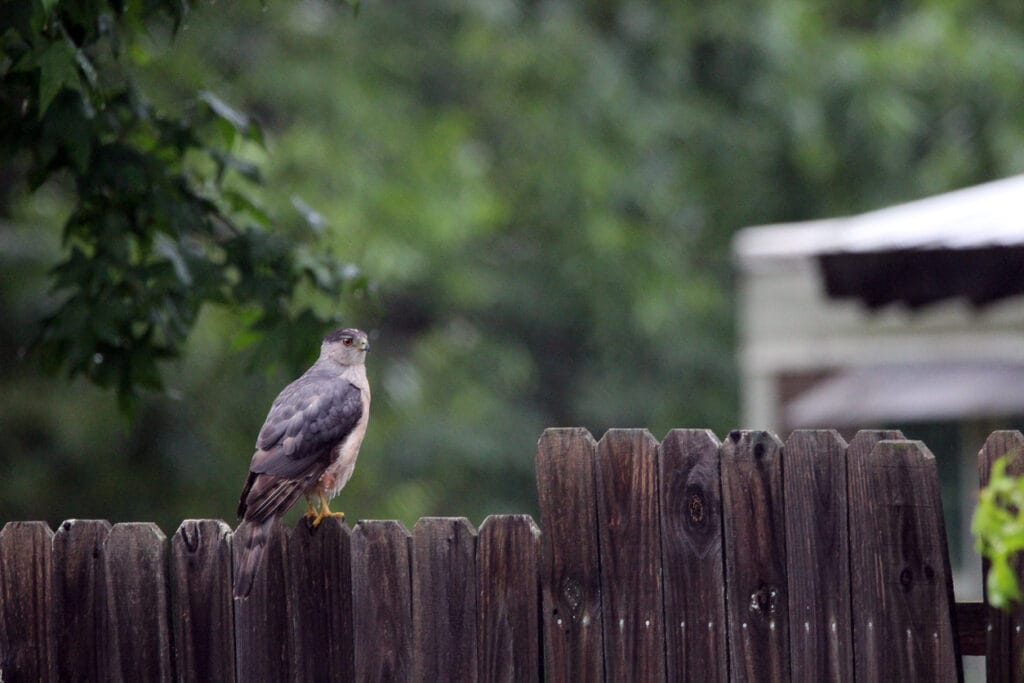
Scientifically known as Accipiter cooperii, male Cooper’s Hawks measure 14.6 to 15.3 inches (37 to 39 cm) long, while the females are 16.5 to 17.7 inches (42 to 45 cm) long.
These birds weigh between 7.8 to 24.0 ounces (220 to 680 g) and their wingspan ranges from 24.4 to 35.4 inches (62 to 90 cm).
Larger than Sharp-shinned Hawks, Cooper’s Hawks possess the traditional accipiter look with wide, rounded wings and a long tail. Their plumage is steely blue-gray on top with reddish-brown streaks on the underside and dark bands on the wings and tail.
These birds demonstrate a flap-flap-glide pattern when they fly. They live in wooded areas from thick forests to leafy backyards.
6. Red-tailed Hawk

Red-tailed Hawks, also known as Buteo jamaicensis,measure between 17.7 to 25.6 inches (45 to 65 cm) long and weigh around24.3 to 51.5 ounces (690 to 1460 g). Their wingspan ranges from 44.9 to 52.4 inches (114 to 133 cm).
Red-tailed Hawks have large bodies, very wide, rounded wings, and wide, short tails. They’re the second-biggest hawk from the Buteo family in North America (the first is the Ferruginous Hawk).
Most of these birds feature deep brown heads and backs with pale undersides and streaked bellies. Adults possess cinnamon-red tails, which is the inspiration behind the name.
Mainly preying on rodents, the Red-tailed Hawk is the most common raptor in Northeast Ohio. It’s commonly spotted perched along highways and flying over suburban areas.
7. Red-shouldered Hawk

The Red-shouldered Hawk, also known asButeo lineatus in the scientific community, has a length ranging between16.9 and 24.0 inches (43 and 61 cm) and a wingspan around 37.0 to 43.7 inches (94 to 111 cm). It weighsabout 17.1 to 27.3 ounces (486 to 774 g).
This species is much smaller than a Red-tailed Hawk but bigger than a Broad-winged Hawk. They possess black and white wings with a copper-red patch on the shoulder and reddish barring on the underside.
Author Note: Red-shouldered Hawks demonstrate a distinctive “reaching” pose when they fly and produce a unique kee-rah whistled sound. They prey on small mammals, reptiles, and amphibians.
These birds inhabit deciduous woodlands where they prefer to stay near swamps and rivers.
8. Broad-winged Hawk

The scientific name of Broad-winged Hawks isButeo platypterus and they measure 13.4 to 17.3 inches (34 to 44 cm) long.
They weigh around 9.3 to 19.8 ounces (265 – 560 g) and possess a wingspan ranging between 31.9 to 39.4 inches (81 to 100 cm).
Broad-winged Hawks are small-sized raptors with stocky bodies, big heads, and short, squared tails. Their feathers are reddish-brown on the heads, barred on the bellies, and streaked in black and white on the tails.
Typically, these birds hunt small animals from their perching positions. They like to stay underneath the forest canopy. They also produce a piercing call on a single pitch.
9. Rough-legged Hawk
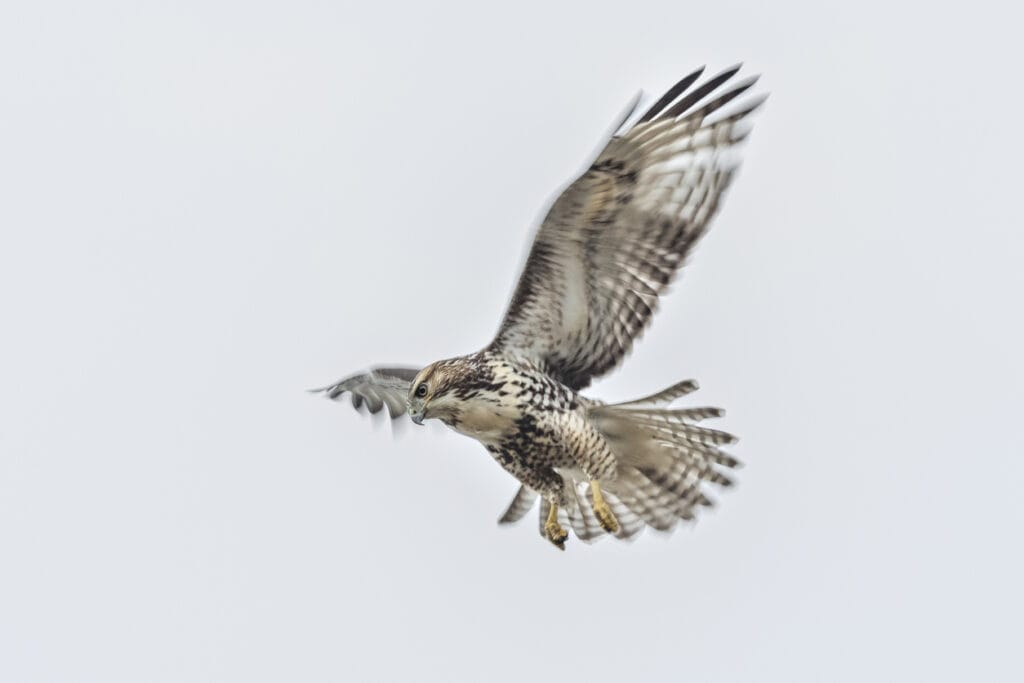
The Rough-legged Hawk, also referred to as Buteo lagopus, has a length of18.5 to 20.5 inches (47 to 52 cm) and a weight of 25.2 to 49.4 ounces (715 – 1400 g). Its wingspan ranges between52.0 and 54.3 inches (132 and 138 cm).
Smaller and less stocky than a Red-tailed Hawk, Rough-legged Hawks are still relatively large buteo with long, wide wings. They also possess longer tails and slightly swept-back wingtips resulting in M-shaped wings.
These birds are generally dark-brown, where light morphs have pale underwings with dark patches while dark morphs show light trailing borders to the underwing.
After breeding in the arctic, Rough-legged Hawks migrate in the winter to open areas such as prairies, fields, and deserts in the United States
10. Osprey

Although some people may confuse an Osprey for an eagle or hawk, it’s actually neither. The Osprey belongs to a different family called Pandionidae and is scientifically known as Pandion haliaetus.
These birds are smaller than a Bald Eagle but bigger and longer than a Red-tailed Hawk. They measure between 21.3 and 22.8 inches (54 and 58 cm) long, weigh around 49.4 to 70.5 ounces (1400 to 2000 g), and possess a wingspan ranging between 59.1 and 70.9 inches (150 and 180 cm).
These birds usually prey on fish, so they’re sometimes referred to as “sea hawks”, “fish hawks”, “river hawks”, and so on. Still, they may also feed small mammals, reptiles, crustaceans, amphibians, and more.
11. Turkey Vulture
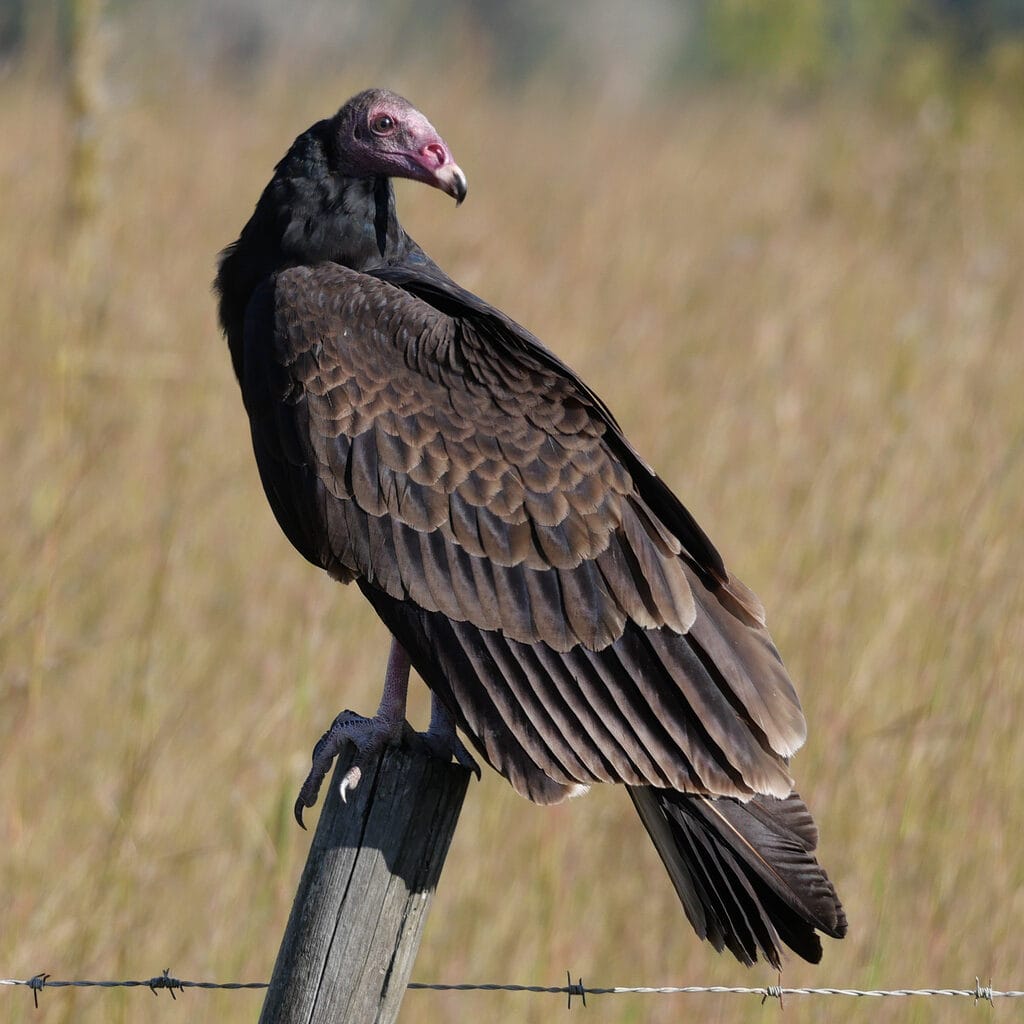
The Turkey Vulture is one of the most common vulture species across the country. They’re commonly called the “Turkey Buzzard” but scientifically known as Cathartes aura.
Turkey Vultures are bigger than Red-tailed Hawks but smaller than an eagle. They measure 25.2 to 31.9 inches (64 to 81 cm) long and weigh around 70.5 ounces (2000 g) with a wingspan of 66.9 to 70.1 inches (170 to 178 cm).
These birds of prey possess black bodies and a featherless red-colored head with a reddish-pink beak. They demonstrate a remarkable flight style at low altitudes where they spread their wings forward in a V-shape.
Turkey Vultures tend to feed on the decaying flesh of dead animals including reptiles, other birds, and invertebrates. They find their meals using their strong sense of smell.
12. Peregrine Falcon
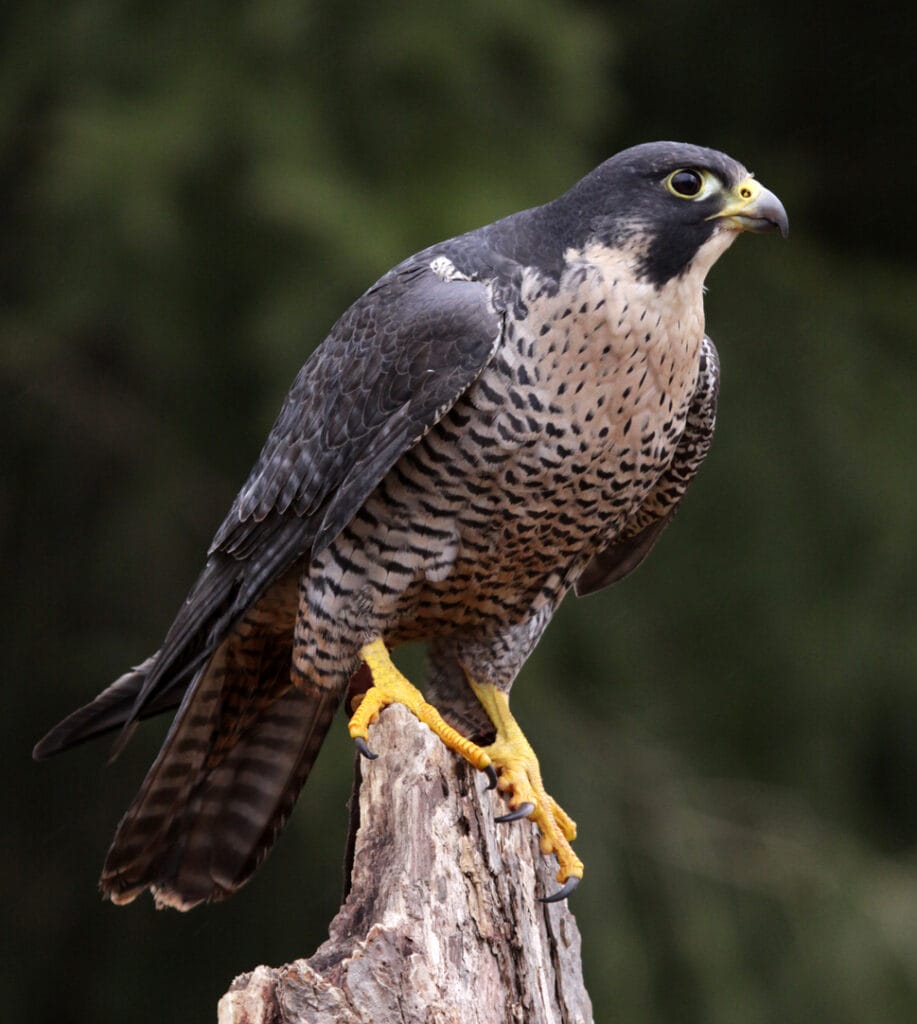
Scientifically known as Falco peregrinus, the Peregrine Falcon is one of the fastest creatures on the planet and the fastest bird in the world by far. The unique aerodynamic shape of its body allows this bird of prey to reach a massive speed of up to 180 to 200 mph when nosediving.
The Peregrine Falcon measures around 14.2 to 19.3 inches (36 to 49 cm) long and weighs about 18.7 to 56.4 ounces (530 to 1600 g). Its wingspan ranges from 39.4 to 43.3 inches (100 to 110 cm).
These predators feed mainly on pigeons but sometimes also consume doves, waterfowls, grouse, songbirds, and more. The adults of the species are blue-gray on top and barred on the underside. They possess dark heads and thick sideburns.
13. Golden Eagle
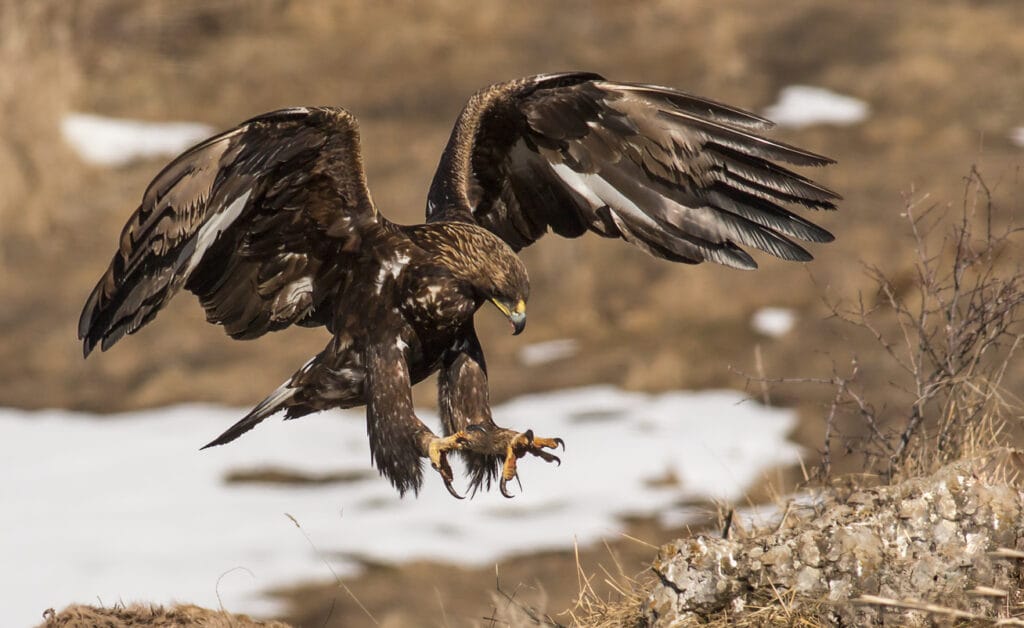
The Golden Eagle, scientifically called Aquila chrysaetos, is one of the most commonly seen birds of prey in Ohio. It features a characteristic golden-brown plumage surrounding the head whereas the rest of its body is covered in brown feathers.
Golden Eagles are known for having powerful legs with long and sharp talons that allow them to easily hunt various small animals in flight, such as squirrels and rabbits.
They measure around 27.6 to 33.1 inches (70 to 84 cm) long, weigh about 105.8 to 216.1 ounces (3000-6125 g), and have a wingspan ranging between 72.8 to 86.6 inches (185 to 220 cm).
14. Northern Harrier
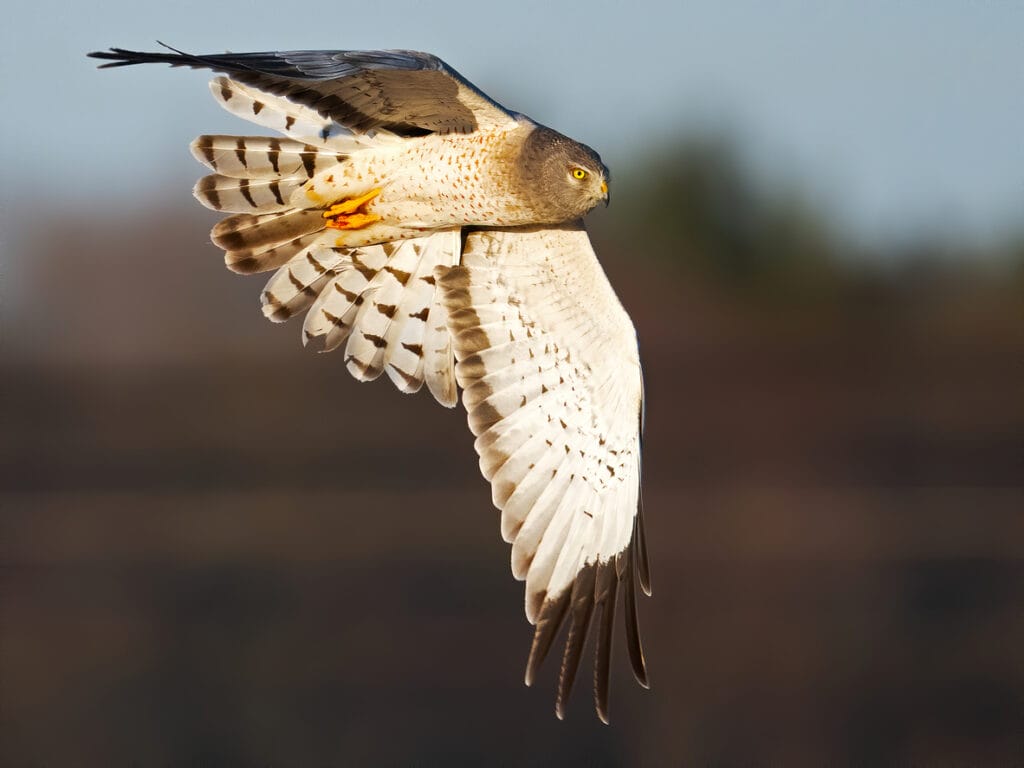
Last but not least, the Northern Harrier is common in Ohio in the spring and fall during migration.
Scientifically known as Circus hudsonius, this raptor is smaller than a Red-tailed Hawk with a length ranging between 18.1 and 19.7 inches (46 and 50 cm) and a wingspan around 40.2 to 46.5 inches (102 to 118 cm).
Author Note: The Northern Harrier weighs about 10.6 to 26.5 ounces (300 to 750 g), with the females of the species being noticeably heavier than the males.
This bird of prey can feed on a wide range of animals including small mammals. birds, and reptiles.
Wrap Up
There you have it,14 of the most common Ohio birds of prey. The information and descriptions we discussed here will help you find and recognize them on your next visit to the Buckeye State.
Just keep an eye out!
FAQ
The Peregrine Falcon has long been admired for its incredible agility and speed. When diving for prey it can reach around 200 miles per hour. Imagine being on the receiving end of that!
Yes, they can be found state wide in any large area of water but they are concentrated in the central and northeast areas.
The most common falcons are the Peregrine, Merlin and American Kestrel. Look for small birds flying very fast, often diving with striking plumage.




